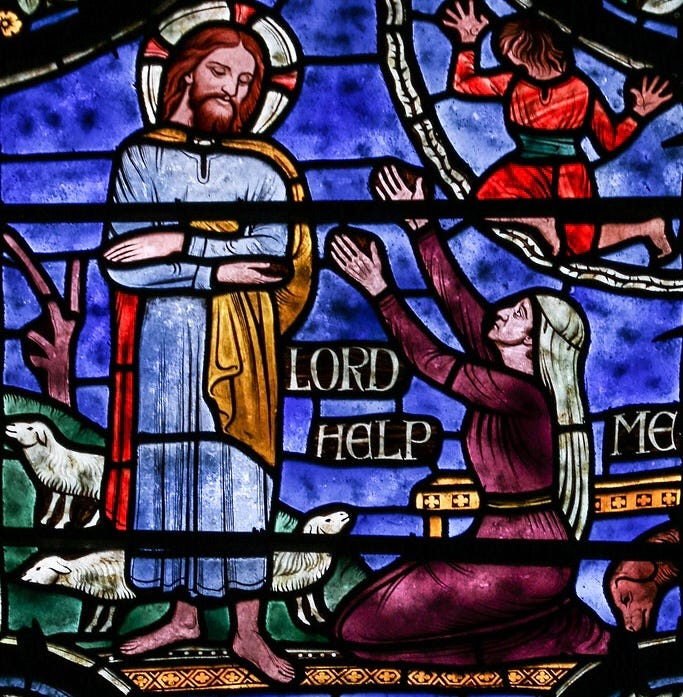Introduction
If the Jews are the Chosen People, the ones with whom God made covenants, why does Mark tell us about a non-Jew, a Gentile living in Israel, whose daughter is cured by Jesus from a distance?
Mark’s Gospel was written for Gentiles. Non-Jewish Christians, probably living in Rome and facing persecution and death at the hands of Emperor Nero, needed reassurance that Jesus is the saviour of all people, not just those who are Jews.
In the Gospel that you will read, Jesus moves beyond the accepted understanding of the Messiah and heals the daughter of a Syrophoenician woman. This was something that no other leader could do. Certainly, Nero could not heal people. Nor was he interested in doing that for someone who was not one of his own.
And the Jewish understanding of the Messiah included the suffering and death of the saviour whose victory over death would be celebrated by people of all nations and tribes.
I recall a friend of mine and a colleague, … she is in heaven now … who was facing her death. She shared with me her doubts about life after death which led her to seek reassurance from her parish priest that God would not abandon her. He knew her goodness was a sign of God’s presence in her life and in ours. She hung on to his words with all the strength she had and faced her death peacefully not many weeks later.
I am certain that the Gospel is more than a story from the past.
The Gospel
Jesus left Gennesaret and set out for the territory of Tyre. There he went into a house and did not want anyone to know he was there, but he could not pass unrecognised. A woman whose little daughter had an unclean spirit heard about him straightaway and came and fell at his feet. Now the woman was a pagan, by birth a Syrophoenician, and she begged him to cast the devil out of her daughter. And he said to her, ‘The children should be fed first, because it is not fair to take the children’s food and throw it to the house-dogs.’ But she spoke up: ‘Ah yes, sir,’ she replied ‘but the house-dogs under the table can eat the children’s scraps.’ And he said to her, ‘For saying this, you may go home happy: the devil has gone out of your daughter.’ So she went off to her home and found the child lying on the bed and the devil gone. (Mark 7:24-30)
The Enquiry
See
What is happening in this story? Look for similarities and differences with other stories of healing in Mark’s Gospel. Then focus on what makes this healing different from others.
What happens because of the Syrophoenician woman’s encounter with Jesus?
Why does Jesus interact with the woman in the way that is described here? What does it suggest about the Gospel writer’s intention?
Judge
What do you think of what you have read? Are you surprised or disturbed by Jesus’ attitude towards the woman?
Is there anything in the story that you would like to change? If so, what? Why? If not, why not?
How is your faith affirmed or challenged by what you witness taking place in this Gospel?
Act
“What the world needs now is ….” What do you identify as the change in the world that this Gospel signals?
What action can you carry out this week that will contribute to the change you would like to make?
Who can you involve in your action, when, how often and how?
Image source: Fr Lawrence Lew OP (Creator): Stained glass window from the National Cathedral in Washington DC, Flickr, CC BY NC-ND 2.0


